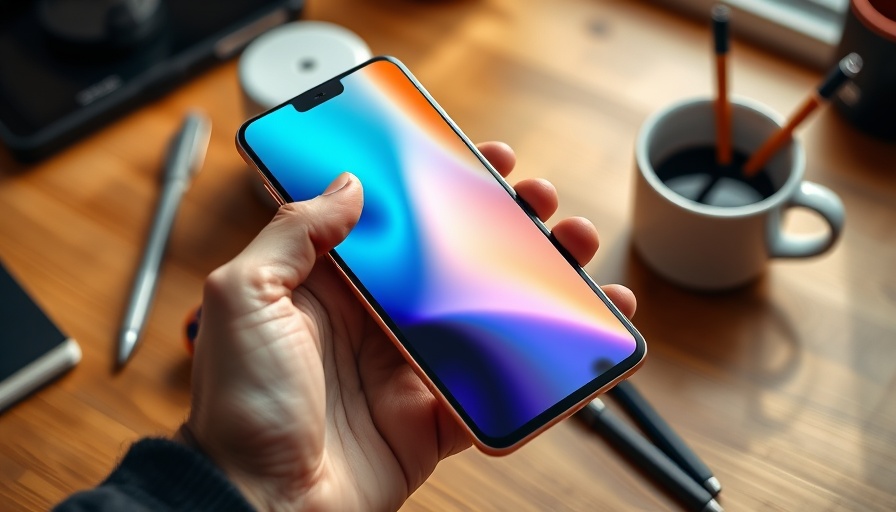
The Intersection of Innovation and Expectation
The launch of the Google Pixel Pro Fold signifies a notable shift in Google’s design strategy, marking its authoritative entry into the foldable smartphone landscape. While traditional Pixel phones focused on providing value through usability and smart software, foldables cater to tech enthusiasts seeking cutting-edge features. This collision of concepts highlights a unique challenge: can Google effectively balance high-end technology with everyday practicality?
Engineering Marvel: The New Hinge Design
At the heart of the Pixel Pro Fold’s appeal is its newly engineered gearless hinge. This innovative design reduces weight while enhancing aesthetic sophistication and real-world durability, a hallmark for any premium device. Engineers, dubbed 'hingeneers', have managed to create a robust system that not only supports the foldable format but also positions it for future advancements. A slimmer bezel enhances the immersive display experience, crucial for users engaged in intense multitasking.
Display Superiority and Functional Challenges
The Pixel Pro Fold boasts a larger, 6.4-inch outer display and an impressive 8-inch interior screen, both showcasing remarkable brightness levels of up to 3000 nits. Users, however, report mixed feelings about the noticeable crease that accompanies the increased screen real estate. The capacity for multitasking is enticing, but it raises questions about how the hardware performs under such expectations, particularly in a competitive market that prioritizes seamless functionality.
Performance in Limbo: The Tensor G5 Dilemma
The mixed performance reviews for the Google Pixel Pro Fold primarily stem from the Tensor G5 chip, which lags behind competitors like the Snapdragon 8 Elite. Although the device is equipped with 16 GB of RAM to bolster multitasking, many users ponder whether the overall experience justifies the price tag. This dilemma stresses the importance of not just integrating powerful hardware but ensuring that performance fully meets market expectations.
The Ergonomics Equation: Fit vs. Function
To meet the high expectations surrounding foldable devices, ergonomics remains a pertinent issue. Priced nearly two thousand dollars, the Pixel Pro Fold's weightiness compared to slimmer competition presents a challenge for user adoption. A balance between stylish design and functionality will be essential as Google seeks to position itself competitively amongst other manufacturers.
The Photography Legacy: Balancing Expectations
Staying true to its Pixel roots, the Pro Fold delivers solid camera performance. However, comparisons with flagship counterparts reveal room for improvement, particularly regarding low-light capabilities and selfie camera quality. As consumer preference for mobile photography grows, the shortcomings of the Pro Fold may limit its appeal to the wider audience outside dedicated Pixel enthusiasts.
Folding Into the Future: The Foldable Landscape
Ultimately, the Google Pixel Pro Fold stands as both a testament to innovation and a cautionary tale of market readiness. As foldable phones gain traction and acceptance, Google's challenge will be to fuse ambitious technology with fundamental user priorities. This balancing act will determine the success and longevity of foldable devices.
Concluding Thoughts: A Call to Embrace Innovation
For those who lead in technology, it’s essential to assess the impact of devices like the Google Pixel Pro Fold, as they signify a step towards the future of mobile computing. As foldables become mainstream, aligning user needs with technological advancements remains paramount. Don’t miss the opportunity to explore how this technology can redefine user experiences across industries. The evolution of devices like the Pixel Pro Fold offers unique insights into the broader conversation around technological integration amidst changing consumer expectations.
 Add Row
Add Row  Add Element
Add Element 



Write A Comment